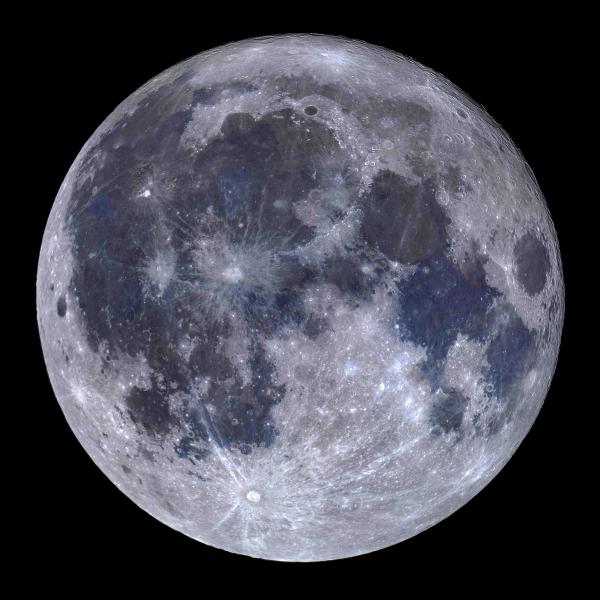
Think something happening 'once in a blue moon' is rare? Blue moons are actually fairly common, at least in astronomical terms.
First things first: a blue moon has nothing to do with the colour of the Moon. Instead, it is all to do with the timing of full moons during the year. Find out more about them below.
What is a blue moon?
Cultures around the world, including the Native Americans, have given names to each of the full Moons, with each typically happening in its own month.
For example the 'Wolf Moon' is usually the full Moon occurring within January. With the cycle of the phases of the Moon lasting approximately one month, and there being 12 months in a year, we typically have 12 full moons each year.
However, the phases of the Moon actually take 29.5 days to complete, meaning 354 days total for 12 full cycles. This falls some way short of the 365/366 days in a calendar year: therefore, roughly every two and a half years a 13th full moon is seen. This additional full moon does not fit with the normal naming scheme and so is instead referred to as a ‘blue moon’.
How often does a blue moon happen?
Normally blue moons occur about every two or three years. In 2018, unusually, we had two blue moons in one year and only two months apart – and one was a lunar eclipse! The next time we will get two blue moons in a year will be 2037.
See images of the Moon at the Astronomy Photographer of the Year exhibition
The traditional definition of a blue moon: seasonal
Which of the 13 full moons is the blue moon is up for debate. Traditionally the definition of a blue moon is the third full Moon in an astronomical season containing four full moons. This is the most complicated definition for people using the standard calendar, as the astronomical seasons begin and end at the equinoxes and solstices (e.g. the winter season begins at the winter solstice and ends at the spring equinox, the spring season begins at the spring equinox and ends at the summer solstice and so on).
The second definition of a blue moon: monthly
Another definition of the blue moon, perhaps the more commonly used due to its simplicity, actually started as a mistake, made in the 1940s and perpetuated by radio shows and the Trivial Pursuit board game through the 1980s.
This definition describes the blue moon as the second full Moon in any calendar month with two full moons. As February 2018 had no full moon in it, both January and March ended up with two full moons, so by this definition both months contained blue moons.
Interestingly though, by both definitions not everywhere in the world experienced the same number or position of blue moons in a year. This is due to different parts of the globe having different time zones, but the Moon having only one moment in time when it is full.
Where does the name 'blue moon' come from?
Quite where the term blue moon came from is unclear. It may be a mispronounciation of the disused word “belewe” which means ‘to betray’. This may be a reference to the betrayal of the usual idea of having one full moon in each month or perhaps the “betrayal” by the Moon of worshippers attempting to determine the position and duration of Lent in the calendar year.
When is the next blue moon?
The next blue moon takes place on 31 May 2026.
Future blue moon dates, based on the different definitions of a blue moon:
| Year | Date | Type |
| 2026 | 31 May | Monthly (second full Moon in a month) |
| 2027 | 20 May | Seasonal (third full Moon in an astronomical season containing four full moons) |
| 2028 | 31 December | Monthly (second full Moon in a month) |
The last blue moon took place on 19 August 2024.
What colour is a blue moon?
Blue moons aren’t blue! Blue moons remain the same colour as any other full moon except in two rare cases:
- During a lunar eclipse, the Moon can turn blood red, lit only by the light bent around the Earth by its atmosphere onto the face of the Moon. As lunar eclipses occur only during full moons, and blue moons are one type of full moon, it's very rare that a blue moon will be red!
- In very rare circumstances, the Moon can appear blue, but in this case the colour would be caused by viewing the Moon through a haze of dust particles in our atmosphere, perhaps from a recent volcanic eruption. From space, however, the Moon will look just as grey as it always has!
What is a black moon?
The opposite of a blue moon, the second new moon in a calendar month is sometimes known as a 'black moon'.

See the world's greatest space photography
Header image: Blue Sky Moon © Michael O'Connell, Astronomy Photographer of the Year Our Solar System category winner 2009







